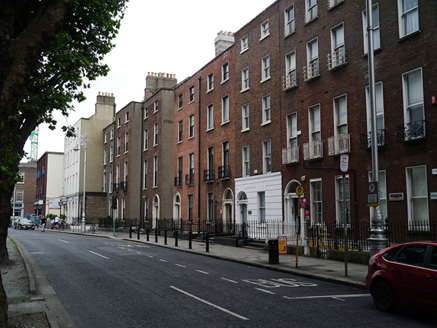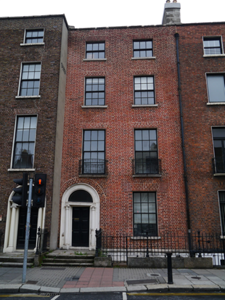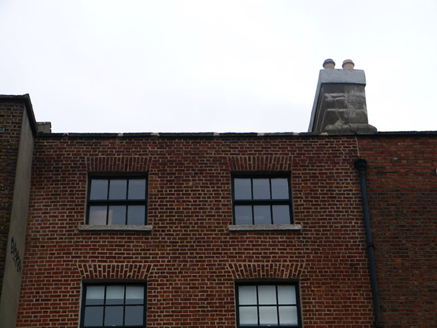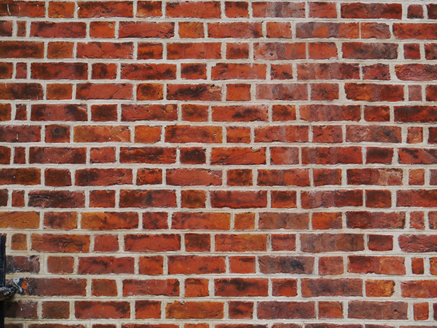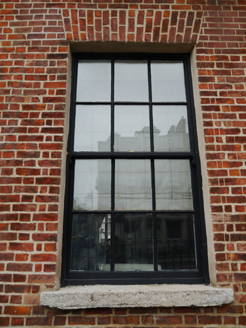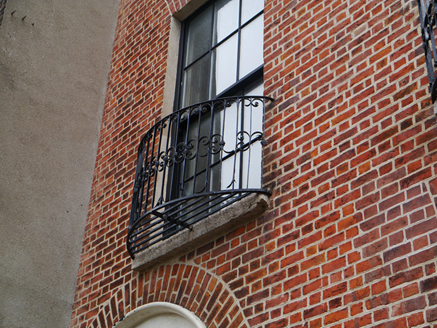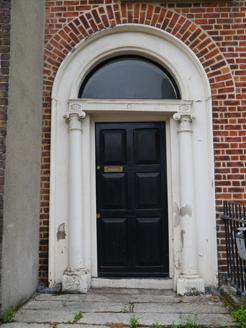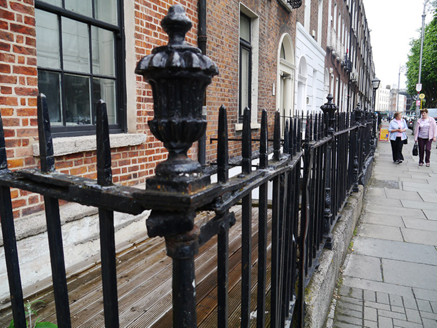Survey Data
Reg No
50100469
Rating
Regional
Categories of Special Interest
Architectural, Artistic
Original Use
House
In Use As
Office
Date
1790 - 1830
Coordinates
316548, 233343
Date Recorded
15/07/2016
Date Updated
--/--/--
Description
Attached two-bay four-storey former house over basement, built c. 1810 as one of pair, with full-height return and two-storey addition to rear. Now in use as offices. M-profile roof, hipped to west of front span, behind brick parapet with granite coping; rendered chimneystacks to east with terracotta pots; concealed gutters, and cast-iron downpipe shared with adjoining building. Flemish bond red brick walling with granite plinth course over painted smooth-rendered basement walling; rendered to rear. Square-headed window openings, diminishing in height to upper floors, having rendered reveals and granite sills. Timber sliding sash windows with ogee horns, three-over-three pane to top floor and six-over-six pane elsewhere; timber sash windows to rear, tripartite to east bay and with round-headed stairs window to west. Decorative bowed wrought-iron balconettes to first floor. Basement area covered by recent timber decking. Round-headed principal entrance has pole-moulded stucco surround, painted masonry doorcase having engaged Ionic columns, capitals having acanthus detail, entablature with fluted frieze and rosettes, replacement fanlight and replacement timber panelled door. Granite entrance platform with three steps to street level. Wrought-iron railings with decorative cast-iron corner posts on moulded granite plinth, enclosing basement area. Recent apartment block to rear plot. Set back from stepped street-line to west.
Appraisal
No. 21 Baggot Street Lower is sited within a well-preserved group of late Georgian houses lining the north side of the street. It is a well-preserved Georgian house, built probably as a pair with the building to the east. It has been restored in recent years with appropriate fenestration. Retaining an original aspect, it is enhanced by retention of its Ionic doorcase, decorative iron balconettes, and the retention of timber sash windows and typical ironwork to the street frontage. It thus makes a worthy contribution to the architectural heritage of Baggot Street Lower and the wider Georgian core of south Dublin. The development of this street was planned in the late 1780s and approved by the Wide Streets Commissioners in 1791. Characterized by rhythmic proportions and graded fenestration, the austere and relatively modest facades of the row are aggrandized by the width of the tree-lined street, as the building line steps back considerably from No. 18 to the west, expanding to a breadth of 30m (100ft).
